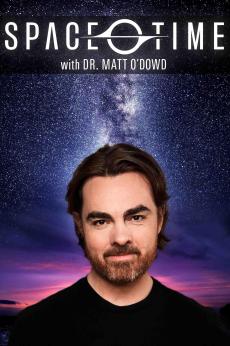Dr. Igda Martinez | Decolonizing Mental Health
Deconstructing stereotypes around homelessness lies at the core of Dr. Igda Martinez’s work at the Floating Hospital. For 150 years, the New York hospital has made psychiatric care available to unhoused populations who are among society’s most neglected. Shannette Champman, a mother of two, shares her experience of seeking care when she was in need of accessible mental health care.
Episodes
-

Dr. Vivian Jackson | Decolonizing Mental Health
5m 20s
Having diverse practitioners is an advantage but Dr. Vivian Jackson believes that it doesn't solve the various levels of disparity within mental healthcare. She believes, for services to work, they have to be placed in spaces where they’re received well. Her formulation of 6 As asks questions that provide a holistic approach to tackling the multi-pronged inequity of mental health services.
-

Idris Mitchell | Decolonizing Mental Health
5m 5s
Idris Mitchell did everything there was to do on the Yale campus, until a diagnosis of bipolar disorder made him miss his finals, lose the perfect 4.0 and feel invisible. What does success mean to a Black queer man who had to be kept away from his pens? How does he turn around and adapt to a constant process of grieving for his previous self, while always being in pursuit of beauty and joy?
-

Lloyd Hale | Part 2 | Decolonizing Mental Health
6m 1s
Lloyd Hale was 16 when undiagnosed schizophrenia led him to commit a crime that put him in prison. This is where he heard an overworked correction officer say the words that changed his life: “You don’t have to do this alone.” Now, a peer support specialist living in recovery, Lloyd spends his time making sure no one around him feels alone in their struggle against the voices in their heads.
-

Shawna Murray-Browne | Decolonizing Mental Health
4m 24s
Before Shawna Murray-Browne’s brother was murdered, she dreamt about it. It was a residue from the trauma of seeing so many Black men being killed around her. This turning point in her career as an integrated psychotherapist made her focus on empowering communities of color to access ways of nurture, care, and healing, that the racist-capitalist society keeps away from them.
-

Lloyd Hale | Part 1 | Decolonizing Mental Health
4m 46s
Lloyd Hale was 13 when his first symptoms of schizophrenia appeared. He was smoking too much weed, he was told. Growing up in the projects, the intersecting matrices of race, poverty and incarceration prevented appropriate treatment while the larger society willfully ignored his welfare. Here’s his story of recovery, resilience and refusal to “sleep it off.”
Extras + Features
-

A Debilitating Condition
2m 13s
For 8 years, Matthew Rosenberg has dealt with a debilitating form of OCD. He hyperventilates throughout the day and is in near-constant pain. having tried numerous therapies and medicines with no results, his last hope is the high-tech surgery he’s waiting for, where electrodes will be transplanted into his brain.
-

Episode 4 Preview: New Frontiers
32s
A look at today’s most cutting-edge treatments, based on the latest scientific understanding of the biological underpinnings of mental illness, with profiles of patients undergoing a variety of vanguard treatments. These include Deep Brain Stimulation surgery, modern electro-convulsive therapy, and MDMA-assisted therapy, also known as ecstasy or molly to treat PTSD.
-

Cook County Jail
4m
Black men with mental health problems are more likely to be incarcerated than white men. 50,000 people pass through Cook County Jail each year and 90% are black. One inmate, Jeremiah Robinson, is diagnosed with schizophrenia, anxiety, bipolar and PTSD, and has been arrested 15 times since high school. How did prisons and jails become a frontline treatment for the mentally ill?
-

The Asylum Hill Project
5m 21s
Some 30,000 patients came through the Mississippi State Hospital for the Insane, and many never left. The asylum cemetery was recently discovered by construction workers, and approximately 7,000 burials were discovered. Not a single one has been identified, but records in the State archives reveal why many were admitted and how they died.
-

Cynthia Piltch and Electroconvulsive Therapy
3m 54s
Fear and misunderstanding have created a stigma around ECT or Electroconvulsive Therapy, but today it’s done with targeted current, anesthesia, and muscle relaxants, making it much safer with fewer side effects. Cynthia has been hospitalized for depression five times and tried many treatments, with little success, before turning to ECT.
-

Psychedelics and Mental Illness
3m 18s
As psychedelic drugs became synonymous with the counter-culture of the 1960s, they were labeled as more dangerous than they actually are, delaying research into them. Recently we've learned more about the chemical makeup of these substances and how they can be helpful in alleviating addiction, anxiety, and depression.
-

The Lobotomy
5m 28s
In 1936, neurologist Walter Freeman performed the first lobotomy in the U.S. It was widely seen as a miraculous intervention and a solution to saving some of the half-million mentally ill patients languishing in asylum 'hell holes'. The procedure soon became widespread and was even used for a member of the Kennedy family. But many lobotomies were performed on patients against their will.
-

Experimental Treatments and the Rise of Eugenics
5m 47s
By the early 20th century, mental asylums had become extremely overcrowded, and very little was known about how to treat these patients. Out of view from the public eye, desperate doctors experimented with new treatments. When treatments failed, patients were labeled biologically defective, fueling the Eugenics program, and the involuntary sterilization of thousands of patients.
-

New Frontiers in Mental Health Care Access
4m 1s
For many of the million-plus people with mental illness in the U.S., access to treatment and insurance is limited. Psychiatrist Sidney Hankerson is working to combat this by bringing healthcare to culturally relevant settings. In the black community, this might mean forming partnerships with trusted community establishments, like barbershops and churches, and developing interventions from there.
-

Episode 3 Preview: The RIse and Fall of the Asylum
32s
Mass confinement in mental asylums and extreme treatments – from lobotomy to coma therapy – were the standard for treating mental illness in the United States until a few decades ago. Today, one of the largest de-facto mental health facilities in the United States is Cook County Jail in Chicago, where more than one-third of inmates have a mental health diagnosis.
-

The Kirkbride Asylum
3m 8s
Thomas Kirkbride's 'hospitals for the insane' were built for people who had nowhere else to go. They were intended to be a retreat from the world; a place to be cured. Kirkbride believed that the restorative atmosphere of his institutions would be therapeutic. The goal was to rehabilitate patients and send them back to society as productive citizens.
-

The Mass Incarceration of the Mentally Ill
2m 55s
As asylums were deemed inhumane and closed down, the social commitment to community care disappeared, and monies were allocated elsewhere. So began the mass incarceration of the mentally ill as, with nowhere to go, they wound up homeless, or in nursing homes or jails. The irony is that they have not been deinstitutionalized, and their treatment resembles the punitive systems of the past.
Schedule
PBS PASSPORT
Stream tens of thousands of hours of your PBS and local favorites with WETA+ and PBS Passport whenever and wherever you want. Catch up on a single episode or binge-watch full seasons before they air on TV.
Similar Shows

NOVA
Science and Nature

Stop Saving the Planet?
Science and Nature

The Invisible Shield
Science and Nature

This American Land
Science and Nature

The Great Whale Rescue
Science and Nature

PBS Space Time
Science and Nature

A Song for Love: An Ape with an App
Science and Nature

DOODLES AND DIGITS: How It's Math
Science and Nature

K'etniyi: The Land Is Speaking To Us
Science and Nature

Crash Course: Artificial Intelligence
Science and Nature